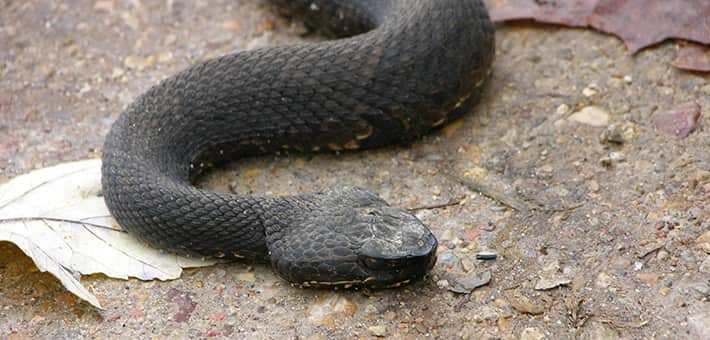Mingo National Wildlife Refuge’s Lesser Known Migration
OutdoorHub 10.18.12

During National Wildlife Refuge Week visitors to Mingo National Wildlife Refuge in Missouri often get to experience two very different types of migration. The first type of migration is the push of migratory birds that utilize the bottomland hardwood forests and marshes of Mingo Refuge as stopover or wintering habitat.
What’s the second type of migration, you ask? Snakes!
Yes, that’s right. Some snakes actually do migrate, just on a much smaller scale than that of migratory birds. At Mingo, snakes will migrate out of the swamps and bottomland habitat up into the bluffs that surround the Mingo Basin and they are doing that right now! National Wildlife Refuge Week usually marks the peak of this movement, with many of the 22 different species of snakes at Mingo Refuge crossing refuge roads to make their way to wintering dens in the caves and crevices of the surrounding bluffs.During this migration period, snakes are exposed to a number of risks, with one of the greatest being vehicles on the roadways. In order to assess the number of snake mortalities that occur on refuge roadways and to locate “hot spots,” refuge biologists conduct snake mortality surveys. During these surveys, refuge staff drive established road transects and record all the snakes observed. Each snake encounter is documented including species type, length, sex, age class, and of course, whether they are alive and what their geographic location is within the refuge.
The data collected from these studies gives refuge biologists a better understanding of Mingo Refuge’s snake population and how they are faring in their annual migration. It provides data on whether a species or age class is more susceptible to mortality and it also points out “hot spots” that snakes favor for migration. These locations could lead to future management actions that aim at reducing snake mortality on the refuge. Snakes are an extremely important component of the bottomland habitat at Mingo National Wildlife Refuge and hopefully through these studies, we can see a higher migration success rate.
Learn more about Mingo National Wildlife Refuge by visiting us online at http://www.fws.gov/refuge/Mingo/.

